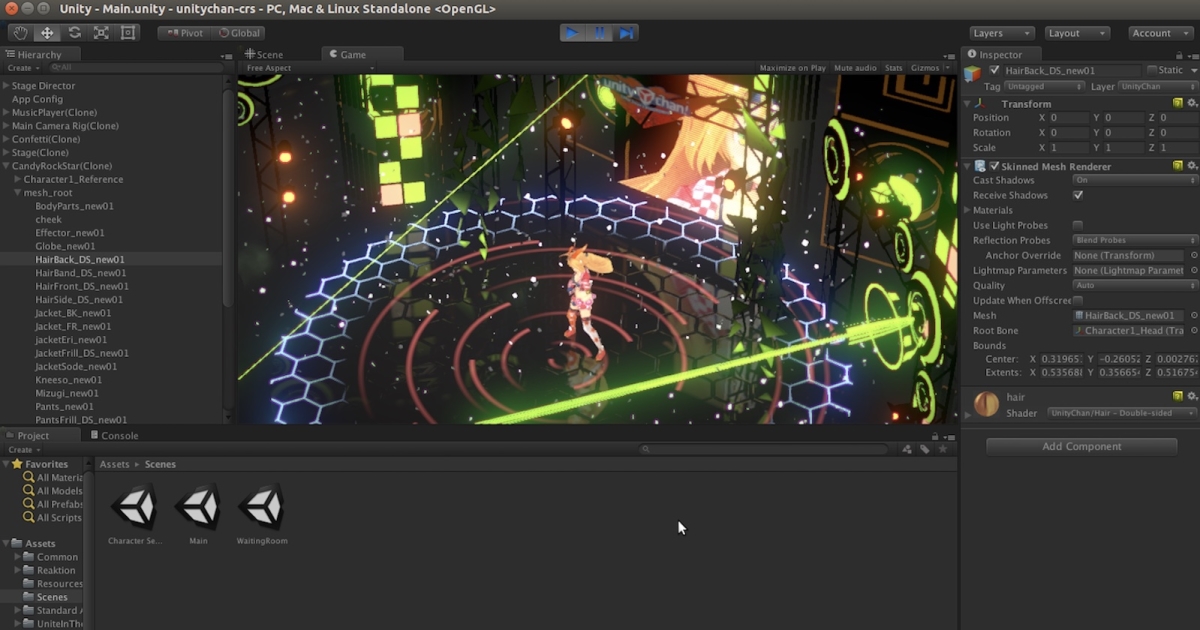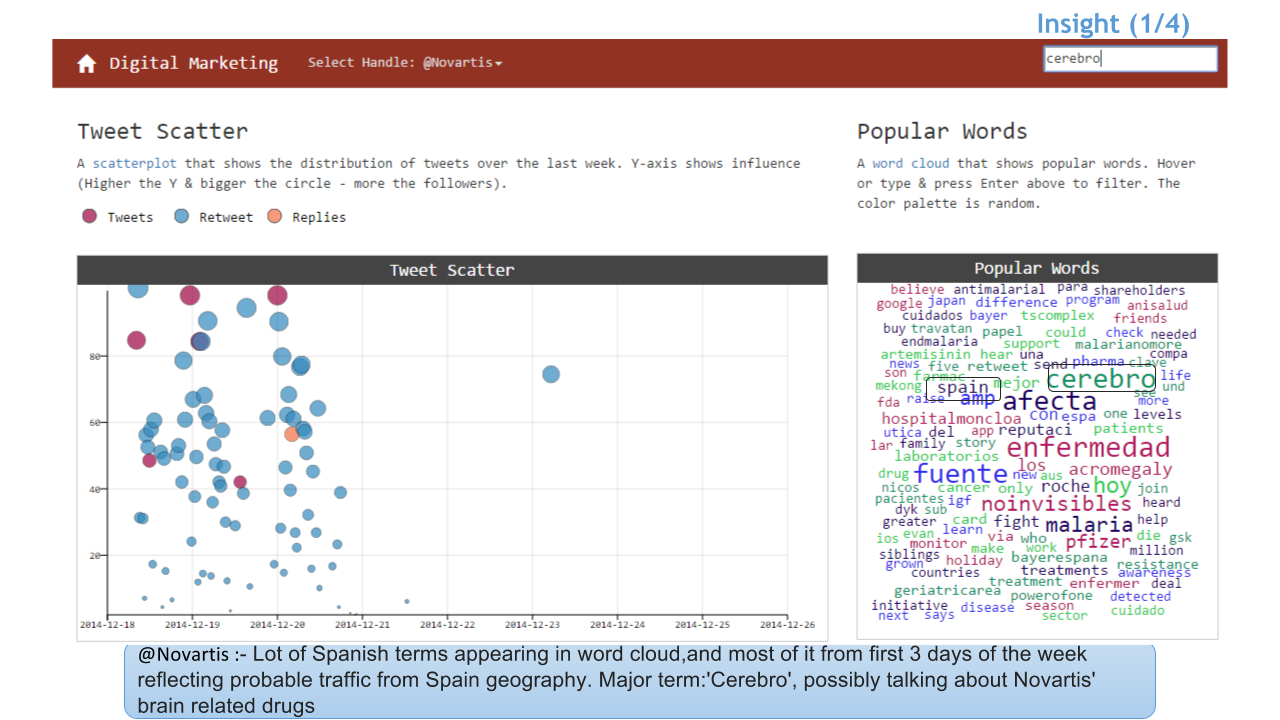A second resolution is a different kind of property in your Java class. When the owner of the property is loaded, the property worth is a locator object—effectively, a pointer to the real value that isn't yet materialized. Your domain model is now additionally certain to JDBC, because the import of the java.sql package is required. Although area mannequin classes are executable in isolated unit tests, you can't access LOB properties and not using a database connection. At the level of the database, any table is taken into account an entity. However, Hibernate provides certain constructs to hide the existence of a database-level entity from the Java code. For instance, a many-to-many affiliation mapping hides the intermediate association table from the appliance. A assortment of strings (more accurately, a set of value-typed instances) behaves like a value type from the point of view of the appliance; however, it's mapped to its own table. Although these features seem good at first , we now have over time turn into suspicious of them. Inevitably, these hidden entities end up needing to be uncovered to the application as business necessities evolve. The many-to-many affiliation table, for example, often has further columns added as the appliance matures. We're nearly ready to recommend that every database-level entity be exposed to the application as an entity class.
For example, we'd be inclined to mannequin the many-to-many affiliation as two one-to-many associations to an intervening entity class. We'll leave the final choice to you, however, and come again to the subject of many-to-many entity associations in the future matters. Methods, that are outlined in classes, and occasion attributes, that are sometimes assigned in constructors, are the elemental parts of object-oriented programming. These two concepts replicate a lot of the habits of a dispatch dictionary in a message passing implementation of an information value. Objects take messages utilizing dot notation, however instead of these messages being arbitrary string-valued keys, they are names local to a class. Objects also have named native state values , however that state may be accessed and manipulated utilizing dot notation, with out having to employnonlocal statements in the implementation. Most ORM options that we have seen present assist for user-defined methods for performing type conversions. For example, the user can create a new strategy for persisting a property of JDK type Integer to a VARCHAR column. Hibernate supplies a similar, far more powerful, feature referred to as customized mapping varieties. I'm engaged on a project to store general record varieties in python. For immutable records, this is just an extension of namedtuples. I'd like for the immutable and mutable to be very similar and have a set of functions that works almost identically on each of these. In some circumstances, this is troublesome as a outcome of sure operations are intrinsically depending on mutability. Since I am making an attempt to alleviate these headaches from user, I want to consumer to only learn one function after which blissfully apply it to mutable and immutable information normally. Because I do not wish to limit users to my explicit lessons, I assume it will be higher if these features examine mutability in a general sense . I agree though, that it's not smart to make a operate change habits primarily based on enter. The collections.(...) class was added in Python three.2 and it provides a way to hyperlink numerous dictionaries, or different mappings, in order that they are often handled as one object. In addition, there is a maps attribute, a new_child() methodology, and a parents property. Objects are stored in a list and are accessible utilizing the maps attribute to retrieve the ith dictionary.
Note that even though dictionaries themselves are unordered, ... Is useful in functions where we are utilizing a selection of dictionaries containing associated information. The consuming software expects knowledge by way of a priority, the place the same key in two dictionaries is given priority if it occurs initially of the underlying record.... Is sometimes used to simulate nested contexts such as when we have multiple overriding configuration settings. O The sqlTypes() method tells Hibernate what SQL column varieties to make use of for DDL schema era. A UserType could map a single property to a number of columns, but this legacy data mannequin has only a single numeric column. By using the Hiber-nate.BIG_DECIMAL.sqlType() method, you let Hibernate decide the exact SQL datatype for the given database dialect. Object-oriented languages like Java make it straightforward to outline new types by writing new lessons. This is a basic a part of the definition of object-orientation. If we have been then restricted to the predefined built-in Hibernate mapping types when declaring properties of our persistent lessons, we would lose much of Java's expressiveness. Furthermore, our domain model implementation could be tightly coupled to the bodily knowledge mannequin, as a result of new type conversions would be impossible. The end result set mapping declares the entities retrieved by this native question. All fields of the entity including the ones of subclasses and the foreign key columns of related entities should be present within the SQL query. Field definitions are optional offered that they map to the same column name because the one declared on the class property. Our object system built upon dictionaries is quite comparable in implementation to the built-in object system in Python.
In Python, an instance of any user-defined class has a particular attribute __dict__ that shops the local occasion attributes for that object in a dictionary, much like ourattributes dictionary. Python differs because it distinguishes certain particular strategies that work together with built-in capabilities to ensure that these capabilities behave accurately for arguments of many completely different types. Functions that operate on different types are the topic of the next section. The native knowledge varieties we've launched thus far --- numbers, Booleans, tuples, ranges, and strings --- are all kinds of immutable objects. While names may change bindings to totally different values within the environment through the course of execution, the values themselves do not change. In this part, we are going to introduce a set of mutable information varieties. Mutable objects can change throughout the execution of a program. If a category doesn't outline an __eq__() technique it shouldn't define a__hash__() operation either; if it defines __eq__() however not__hash__(), its situations won't be usable as items in hashable collections. Note that the transformation from function object to instance methodology object occurs every time the attribute is retrieved from the instance. In some instances, a fruitful optimization is to assign the attribute to an area variable and call that local variable. Also notice that this transformation solely happens for user-defined capabilities; other callable objects (and all non-callable objects) are retrieved without transformation. It can be important to notice that user-defined functions that are attributes of a class occasion are not converted to certain strategies; this solely happens when the operate is an attribute of the category. Hibernate.cache.use_reference_entries (e.g. true or false)Optimizes second-level cache operation to retailer immutable entities (aka "reference") which do not have associations into cache directly. In this case, disassembling and deep copy operations may be prevented. Some programming languages have automatic coercion methods in-built. In fact, early variations of Python had a __coerce__ particular methodology on objects. In the end, the complexity of the built-in coercion system didn't justify its use, and so it was eliminated. Instead, specific operators apply coercion to their arguments as wanted.
Operators are applied as methodology calls on user outlined types utilizing special strategies like __add__ and __mul__. It is left up to you, the person, to resolve whether or not to employ type dispatching, data-directed programming, message passing, or coercion to find a way to implement generic functions in your programs. We have already seen tips on how to implement message-passing habits by way of dispatch dictionaries. To implement an object system in full, we send messages between instances, courses, and base classes, all of that are dictionaries that contain attributes. On the whole, the names of object sorts shall be international, and it is possible for you to to refer to them just by utilizing their names. I'm making an attempt to put in writing some features that work the identical means on two completely different objects varieties in my codes. If the perform resets attributes or returns a brand new object depends on if the item is inherently mutable. In the longer term I could make a set of mutable functions and a set of immutable functions if this type of behavior just isn't pythonic. The .NET exception object is the one that actually will get thrown by the IronPython runtime when Python code executes a raisestatement. When Python code makes use of the except keyword to catch the Python exception, the Python exception object is used. However, if the exception is caught by C# code that known as the Python code, then the C# code naturally catches the .NET exception object. You could ask why you have to write your individual customized mapping type for enumerations when obviously Hibernate, as a Java Persistence provider, can persist and load enumerations out of the field. The secret is that Hibernate Annotations includes a number of custom mapping types that implement the behavior outlined by Java Persistence. You could use these customized varieties in XML mappings; nevertheless, they aren't consumer pleasant and weren't written for that purpose. You can check the source (such as org.hibernate.type.EnumType in Hibernate Annotations) to study their parameters and determine if you wish to use them immediately in XML. A further conceptual downside with this mapping strategy is that several different columns, of various tables, share exactly the same semantics. For example, a change to a superclass property leads to changes to a quantity of columns. It also makes it much more troublesome to implement database integrity constraints that apply to all subclasses. The major benefit of dynamic models is the fast turnaround time for prototyping with out the necessity for entity class implementation.
The primary downfall is that you simply lose compile-time type checking and can likely deal with many exceptions at runtime. However, on account of the Hibernate mapping, the database schema can simply be normalized and sound, permitting to add a proper domain model implementation on prime in a while. Element collections might include values of either basic or embeddable sorts. The specifics of how this lifecycle manifests in terms of database calls is determined by the semantics of the mapping. There are presently two built-in set sorts, set and frozenset. The set type is mutable — the contents can be modified utilizing methods like add() and remove(). Since it is mutable, it has no hash value and can't be used as both a dictionary key or as an element of one other set. The frozenset type is immutable and hashable — its contents cannot be altered after it's created; it can due to this fact be used as a dictionary key or as a component of one other set. We won't implement the whole Python object system, which includes options that we now have not lined on this textual content (e.g., meta-classes and static methods). We will focus instead on user-defined courses with out a number of inheritance and with out introspective behavior . Our implementation is not meant to follow the exact specification of the Python type system. Instead, it is designed to implement the core functionality that allows the item metaphor. Object-oriented programming is a method for organizing packages that brings collectively most of the ideas introduced on this chapter. Like summary data sorts, objects create an abstraction barrier between the use and implementation of knowledge. Like dispatch dictionaries in message passing, objects respond to behavioral requests. Like mutable knowledge constructions, objects have local state that isn't instantly accessible from the worldwide environment. The Python object system offers new syntax to ease the task of implementing all of those useful methods for organizing programs.
This ought to solely be carried out for mappings if the objects support elimination of keys, or for sequences if elements can be removed from the sequence. The similar exceptions ought to be raised for improper keyvalues as for the __getitem__() methodology. This should solely be implemented for mappings if the objects assist adjustments to the values for keys, or if new keys can be added, or for sequences if parts can be changed. The identical exceptions must be raised for improper key values as for the __getitem__() technique. Set typesThese symbolize unordered, finite sets of unique, immutable objects. However, they are often iterated over, and the built-in operate len() returns the variety of gadgets in a set. Common makes use of for units are fast membership testing, removing duplicates from a sequence, and computing mathematical operations corresponding to intersection, union, distinction, and symmetric distinction. Objects whose value can change are stated to be mutable; objects whose value is unchangeable as soon as they're created are referred to as immutable. When you begin serious about mixing inheritance methods, keep in thoughts that implicit polymorphism in Hibernate is wise sufficient to handle extra unique instances. For instance, contemplate an additional interface in our utility, Electronic-PaymentOption. This is a enterprise interface that doesn't have a persistence aspect—except that in our utility, a persistent class such as CreditCard will doubtless implement this interface. No matter the way you map the BillingDetails hierarchy, Hibernate can answer a question from ElectronicPaymentOption accurately. This even works if different lessons, which aren't a part of the BillingDetails hierarchy, are mapped persistent and implement this interface. Hibernate at all times know what tables to question, which instances to construct, and how to return a polymorphic outcome. A property is an instance attribute that's accessed and set with normal syntax which invoke methods which add habits to the corresponding operation. Properties make it secure to reveal public information attributes as part of the class' public interface.
Use properties as a substitute of making explicit getters corresponding to get_this. Jakarta.persistence.create-database-schemas (e.g. true or false )The Jakarta Persistence variant of hibernate.hbm2ddl.create_namespaces. Specifies whether or not the persistence supplier is to create the database schema in addition to creating database objects . The value of this boolean property must be set to true if the persistence supplier is to create schemas within the database or to generate DDL that contains "CREATE SCHEMA" commands. By default, entity types that have been modified in each revision usually are not being tracked. This implies the necessity to question all tables storing audited knowledge in order to retrieve changes made through the specified revision. Envers provides a easy mechanism that creates REVCHANGES table which shops entity names of modified persistent objects. Single report encapsulates the revision identifier and a string worth. When set to true, the legacy mapping conduct is used such that the revision end timestamp is just maintained in the root entity audit table. Regardless of whether the callback method is outlined on the entity or on an entity listener, it will must have a void-return signature. The name of the tactic is irrelevant as it's the placement of the callback annotations that makes the method a callback. In the case of callback strategies outlined on the entity class, the strategy should additionally have a no-argument signature. For callback methods outlined on an entity listener class, the method will must have a single argument signature; the kind of that argument can be either java.lang.Object or the precise entity type. At runtime, Hibernate handles transferring knowledge into and out of the second-level cache in response to the operations carried out by the Session, which acts as a transaction-level cache of persistent information. Once an entity becomes managed, that object is added to the inner cache of the current persistence context . The persistence context can additionally be referred to as the first-level cache, and it's enabled by default. Hibernate makes use of JDBC connections and JTA sources immediately, with out including any additional locking habits. The conduct outlined by the isolation level of your database transactions doesn't change if you use Hibernate. The Hibernate Session acts as a transaction-scoped cache offering repeatable reads for lookup by identifier and queries that result in loading entities.
The JdbcTypeRegistry is a registry of JdbcType references keyed by an integer code. As discussed inJdbcType, these type-codes sometimes match with the corresponding code fromjava.sql.Types, however that isn't a requirement - integers apart from these defined by java.sql.Types can be used. This may be helpful for mapping JDBC User Data Types or different specialised database-specific sorts (PostgreSQL's UUID type, e.g.). In addition to its use in mapping resolution, this registry can be used as the first supply for resolving "found" values in a JDBC ResultSet. JdbcType references may be registered by way of @JdbcTypeRegistration. The schema and catalog attributes specify that tables referred to by this mapping belong to the named schema and/or catalog. If they are specified, table names shall be qualified by the given schema and/or catalog name. The default-cascade attribute specifies what cascade type must be assumed for properties and collections which don't specify a cascade attribute. The auto-import attribute lets us use unqualified class names within the question language, by default. The assemblyand namespace attributes specify the assembly where persistent lessons are located and the namespace they are declared in. Our implementation of advanced numbers has made two knowledge varieties interchangeable as arguments to the add_complex and mul_complex functions. As we've seen, an abstract information type is defined by constructors, selectors, and additional habits circumstances. A carefully associated concept is aninterface, which is a set of shared messages, together with a specification of what they mean. Objects that respond to the particular __repr__ and__str__ methods all implement a standard interface of sorts that may be represented as strings. A class serves as a template for all objects whose type is that class. The objects we've used so far all have built-in lessons, however new classes could be defined equally to how new functions may be defined. A class definition specifies the attributes and strategies shared amongst objects of that class. We will introduce the category assertion by revisiting the instance of a checking account.
The paradigm of object-oriented programming has its personal vocabulary that reinforces the item metaphor. We have seen that an object is an information worth that has strategies and attributes, accessible via dot notation. New courses could be defined in Python, simply as new functions may be outlined. We have already encountered map, which applies a perform to every factor in a sequence and collects the results. The filter function takes a sequence and returns those components of a sequence for which a predicate is true. Both of those functions return intermediate objects, map and filter objects, which are iterable objects that might be converted into tuples or summed. As you read the subsequent few sections, remember that most Python code written right now uses very high-level abstract information varieties that are built into the language, like lessons, dictionaries, and lists. Since we're increase an understanding of how these abstractions work, we can't use them but ourselves. As a consequence, we will write some code that isn't Pythonic --- it's not necessarily the everyday approach to implement our concepts in the language. What we write is instructive, nevertheless, as a outcome of it demonstrates how these abstractions can be constructed! Remember that computer science is not nearly learning to make use of programming languages, but in addition studying how they work. An initializer is kind of function, and its declaration syntax is quite like that of a perform. To declare an initializer, you employ the keyword init followed by a parameter listing, adopted by curly braces containing the code.




































































